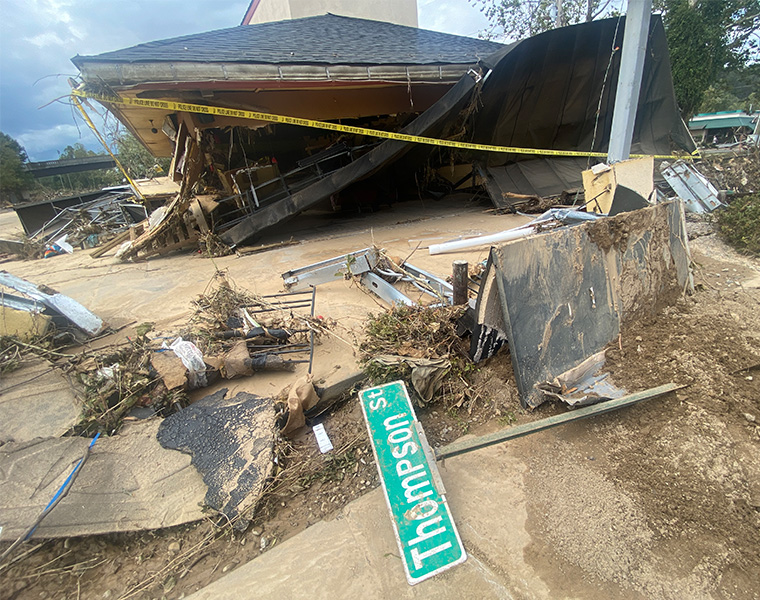As climate change accelerates, hurricanes are becoming more intense and destructive, bringing heavier rains, stronger winds and devastating storm surges. Hurricanes Helene and Milton serve as stark examples of this—both storms grew stronger due to the warmer waters of the Gulf of Mexico and left behind flooded cities and overwhelmed communities.

To gain a deeper insight into how climate change is fueling hurricanes, The Daily sat down with Peter Whiting, interim dean of the College of Arts and Sciences and professor of earth, environmental, and planetary sciences at Case Western Reserve University.
Read on to discover more from Whiting about how climate change is contributing to more weather-driven destruction.
1. Warming temperatures drive heavier rain.
As the planet warms, more water evaporates from the land surface and oceans into a warmer atmosphere. For every 1°C increase in temperature, the atmosphere can hold 7 percent more water vapor. This means that when it rains, there is more moisture available to fall as precipitation. In a warmer world, we see more frequent and larger floods due to heavier rainfall.
2. Warmer oceans fuel hurricanes.
Warming oceans can also increase the intensity of hurricanes. Hurricanes are fueled by the heat energy of ocean water. As water evaporates from the tropical oceans, it rises and condenses. This change from water vapor to liquid water releases energy that powers hurricanes. More evaporated water vapor from warmer oceans provides that much more energy to supercharge hurricanes.
3. Rising air powers storms.
The energy released by the change from water vapor to liquid further warms the air.
Warmer air is less dense and buoyantly rises. The rising air lowers atmospheric
pressure near sea level which draws more air in at the surface. As more warm air is
drawn in at the surface, there is yet more energy for a developing storm because more
water vapor is converted to liquid water. Atmospheric pressure drops further, and air is
more rapidly drawn into the storm at the surface which we observe as higher wind
speeds.
4. Stronger wind creates bigger storm surges.
What we saw with Hurricane Helene and now Hurricane Milton is that the warmer Gulf of Mexico allows hurricanes to grow stronger as there is more water vapor to fuel the storms. Wind speeds grow higher because the atmospheric pressure drops lower. The stronger wind blowing across the ocean pushes more water that mounds up along coasts to create
bigger storm surges. It is storm surges that are often the biggest cause of damage and
death along coastlines. The stronger hurricanes in our warmer atmosphere hold
yet more water that falls as intense rains. Warmer oceans thus allow hurricanes to
have stronger winds, bigger storm surges, and heavier rain.


